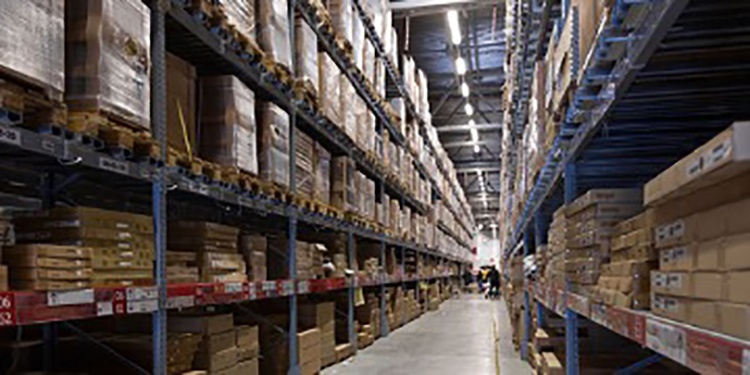To keep installers safe when working in an elevated position of six feet or more when assembling an industrial steel storage rack, the Occupational Health and Safety Administration (OSHA) has specific requirements for the usage of personal fall protection systems. OSHA Standard Number 1910.140 mandates the use of these systems. They include body harnesses and their lanyards and connectors. For safety, OSHA requires a tie-off of the fall protection system at a point within the structure that can support at least 5,000 pounds of force in the event of a fall.
That’s a considerable amount of force that results in a shock transferred to the rack structure when the safety devices stop the installer’s fall. For that reason, it’s important to tie-off only to specific areas within a pallet rack—because not every area or component can withstand that degree of force.
Tie-Off Recommendations
For safety, when working in elevated positions, RMI recommends tying off using OSHA approved personal fall protection systems. The fall protection systems can typically be connected to the rack system in one of two different areas:
- Around a column just above a shelf beam connection. This is because beam-to-column connection points are typically engineered to hold in excess of 5,000 pounds.
- Around a column at the point where it connects to a cross-aisle tie. These connections are applied to minimize the risk of a single row of rack from becoming unstable and overturning due to a seismic event when the height-to-depth ratio of the rack exceeds 6 to 1, as detailed in Section 8.1 of RMI’s ANSI MH16.1: Design, Testing and Utilization of Industrial Steel Storage Racks.
Best practice is to only tie-off at locations specified by a qualified engineer who has evaluated that these tie-off locations meet the appropriated OSHA capacities. The rack manufacturer’s engineering team frequently identifies tie-off locations on the system drawings.
Finally, the rack’s manufacturer or supplier typically recommends or authorizes a specific installation contractor to erect the system. Although the system owner does not usually install the system, it’s still important to be aware of the tie-off requirements. This allows the owner to ensure the installer is properly adhering to the safety precautions.
Other Ways to Protect Workers on Elevated Platforms
Click here for RMI’s recommendations for keeping workers on rack-supported platforms and pick modules safe.




